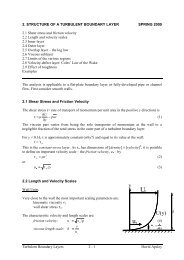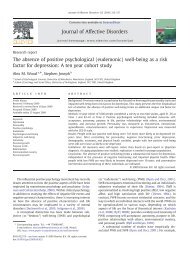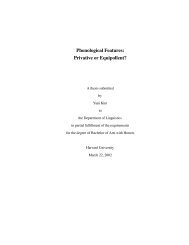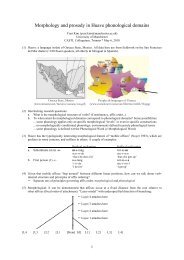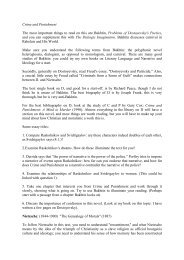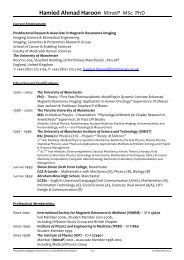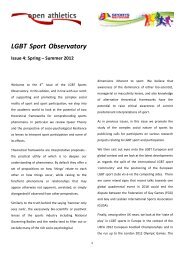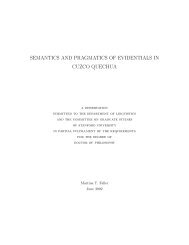A Guide to Imputing Missing Data with Stata Revision: 1.4
A Guide to Imputing Missing Data with Stata Revision: 1.4
A Guide to Imputing Missing Data with Stata Revision: 1.4
Create successful ePaper yourself
Turn your PDF publications into a flip-book with our unique Google optimized e-Paper software.
1 Introduction<br />
Very often in observational studies of treatment effects, we have missing data<br />
for some of the variables that we wish <strong>to</strong> balance between the treated and<br />
untreated arms of the study. This leaves us <strong>with</strong> a number of options:<br />
1. Omit the variable <strong>with</strong> the missing data from the propensity model<br />
2. Omit the individuals <strong>with</strong> the missing data from the analysis<br />
3. Reweight the individuals <strong>with</strong> complete data <strong>to</strong> more nearly approximate<br />
the distribution in all subjects<br />
4. Impute the missing data<br />
Option 1 is likely <strong>to</strong> give a biased estimate of the effect of treatment,<br />
since the treated and untreated subjects will not be balanced for the variable<br />
<strong>with</strong> missing values. Option 2 is also likely <strong>to</strong> produce a biased answer [1], as<br />
well as increasing the width of the confidence interval around the answer by<br />
reducing the number of subjects included in the analysis. Therefore, options<br />
3 and 4 are preferable: this document applies <strong>to</strong> option 4.<br />
The <strong>Stata</strong> ice routine (Imputation by Chained Equations: see [2]) is very<br />
useful for performing imputation. It can impute variables of various types<br />
(continuous, categorical, ordinal etc) using different regression methods, and<br />
uses an iterative procedure <strong>to</strong> allow for multiple missing values. For example,<br />
if you are imputing HAQ from DAS and disease duration, you may have<br />
subjects <strong>with</strong> both HAQ and DAS missing. You would then need <strong>to</strong> impute<br />
DAS, and use the imputed DAS <strong>to</strong> impute the HAQ.<br />
The imputations produced by ice take in<strong>to</strong> account the uncertainty in the<br />
predictions. That is, random noise will be added <strong>to</strong> the regression coefficients<br />
<strong>to</strong> allow for sampling error, and an error term will be added <strong>to</strong> allow for the<br />
population variation. In this way, both the mean and variance of the imputed<br />
values ought <strong>to</strong> be correct, as well as the correlations between variables.<br />
I will illustrate all of these procedures using an analysis of data from the<br />
BSRBR. We aim <strong>to</strong> perform a survival analysis of death, <strong>with</strong> the following<br />
variables regarded as confounders:<br />
3






